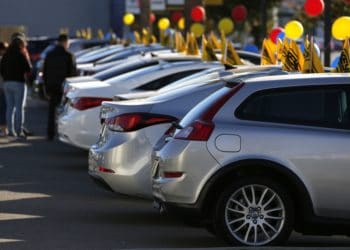Consumer Preferences May Pose ‘Prominent Threat’ to Residuals, Moody’s Says

Changing consumer preferences and new electric vehicle technology bear “prominent threats” for auto finance, in particular, due to residual values, Moody’s Investors Service said in a report Monday.
In North America, customers have an increased preference for SUVs, partly attributable to low gas prices and good economic conditions. The sales mix of new SUVs and trucks in the U.S. is 64%, versus cars at 36%. Five years earlier, the mix was more balanced at 50% each, according to the report. In Canada, the sales mix is roughly 68% for new SUVs and trucks, and 32% for cars, compared with a more balanced 56% and 44% in 2013.
“An economic downturn and/or a renewed spike in oil prices would reverse this trend, leaving lenders and lessors to absorb the falling values of used SUVs when the vehicle is returned at the end of the contract,” Moody’s wrote in the report. In the last recession, which also had a gas price spike, residual value losses on SUVs were in the range of 15% to 25%.
Additionally, in the U.S. and Canada — where roughly one-third of new vehicle registrations are a lease — residual values are facing a headwind because of the large number off-lease vehicles that will come onto the used-car market in the next few years. “Captive auto finance companies originate the vast majority of leases in the U.S. and Canada and have assumed the [residual] risk. Off-lease vehicles in both countries are at high levels at present and we expect them to remain high,” according to the report.
Battery electric vehicles (BEV) and non-BEV alternative fuel vehicles (AFV) may also cause long-term residual issues for the auto finance industry. “Electric vehicles across the board tend to retain values less than ICE (internal combustion engine) cars, with the exception of Tesla, regardless of tech or not,” Mike Vogan, lead auto economist at Moody’s Analytics, told Auto Finance News prior to the report’s publication.
Today, BEVs and AFVs comprise less than 5% of the global market, giving them a short and rather shallow residual value history. By the mid-2020s, however, they should be close to 20% and rising fast. “Still, evolving BEV and AFV technologies lacking long track records of used-car values will, in our view, accentuate the car industry’s vulnerability to technological change,” Moody’s wrote.
The threat from residual value risk varies by country, according to Moody’s. For example, in China — which represents 30% of global vehicle sales — the auto finance market is relatively young so the residual value risk for loans and leases is low. However, as financing grows in the country, auto finance risk will grow commensurately.
For more content like this, attend the third annual Auto Finance Innovation event, slated for March 7-8, at the Parc 55 in San Francisco. For information, or to register, visit autofinanceinnovation.com.















